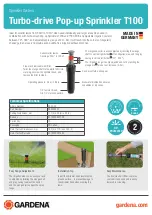
AQUAPHOR
PROFESSIONAL
WATER TREATMENT
L.Tolstoi
2A, Sillamäe,
40231 Estonia
www.pro.aquaphor.com
International: +372 356 2204 21
Skype: aquaphor market.pro
e-mail: [email protected]
provided by water level sensors in the water feed tank, clean water tank, and the input
pressure switch.
6.1.2.2
Before starting the pump, unscrew the venting plug located on the top
of the pump to release the air.
6.1.2.3
If the pump is used after a long period of shut down , firstly check
the free rotation of the fan motor, to ensure the it is not jammed due to corrosion.
6.1.3
Installation of reverse osmosis.
Before installing the membrane, the piping must be flushed to eliminate the dust
formed during the installation, or other debris in the system with the high-pressure
reverse osmosis pump. Warning: direction of fitting the membrane strictly defined
and indicated by the arrows.
6.1.4
The principle of water purification reverse osmosis system.
The system is set to use reverse osmosis membrane. With proper maintenance of the
RO system, the lifetime of the membrane is 3-5 years and over. RO system is based
on the method of membrane separation that allows to remove salt ions, organic
compounds, bacteria and other impurities from the water with the aim of purification
or desalting. It is based on the principle of separation of permeate (clean water) and
concentrate (dirty water) through the membrane. Water tends to get to a solution
–
a
process called osmosis. Between water and solution is the osmotic pressure. If the
solution is provided with more pressure than the osmotic pressure then permeate
(water) to be filtered through the membrane will not desalt the solution properly.
Thus, it takes desalting by reverse osmosis. With sufficient pressure, the raw water
passes through the RO membrane, and permeate as purified water. The concentration
of solutes and suspended particulates gradually increases and discharge to the drain.
This is the principle of operation of water purification by reverse osmosis system.
6.2
Technological drawing of the reverse osmosis system
Raw water passes through the protective filters, which allow to remove chlorine and
most of the suspended particles, and enters to the high-pressure pump, which builds
pressure up to 100-250 PSI (pressure required depends of the type of membrane).
Then, water is fed to the RO membranes under pressure. The RO membranes are
installed in the housings and produce separating permeate (product, i.e. purified water)
and concentrate (drainage).











































